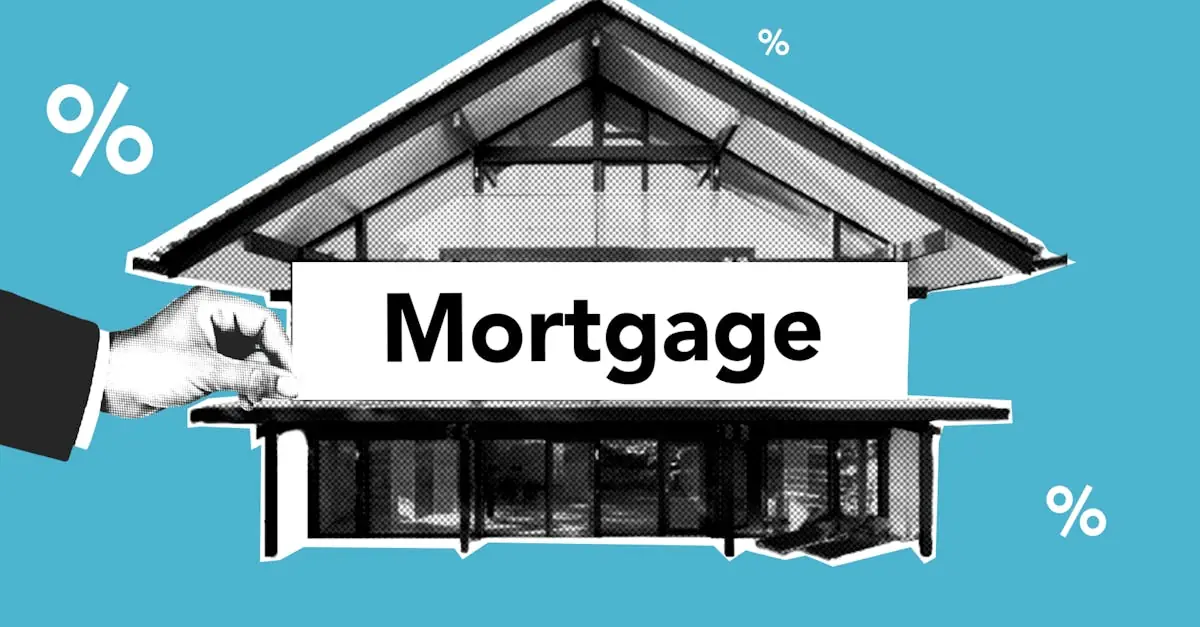Table of Contents
ToggleWhen it comes to homeownership, there’s one unavoidable truth: property taxes are as certain as that one neighbor who insists on mowing their lawn at 7 AM. While many homeowners dread the annual tax bill, understanding the average property tax rate can turn anxiety into empowerment. After all, knowledge is power—and it might just help them keep a few more bucks in their pockets.
Navigating the world of property taxes doesn’t have to feel like deciphering hieroglyphics. With a little insight into what makes up those rates, homeowners can make informed decisions about their investments. Whether they’re eyeing a cozy cottage or a sprawling mansion, knowing the average property tax rate can be the difference between a wise purchase and a financial headache. So let’s dive into the numbers and uncover the secrets behind those pesky tax bills—because who doesn’t want to be the smartest homeowner on the block?
Understanding Average Property Tax Rate
Average property tax rates play a crucial role in the financial landscape for homeowners. Grasping these rates aids in better financial planning and decision-making regarding property investments.
What Is Property Tax?
Property tax represents a levy imposed by local governments based on property value. This tax funds essential services such as education, public safety, and infrastructure maintenance. Homeowners receive an annual property tax bill detailing the taxable value of their property and the specific tax rate. The rate varies significantly across jurisdictions, influenced by regional laws and public funding needs. Understanding property tax ensures homeowners prepare for ongoing financial obligations tied to ownership.
How Is Average Property Tax Rate Calculated?
The calculation of the average property tax rate involves several steps. Local assessment offices determine property values based on market trends. Tax rates are then set by local governments to generate revenue needed for public services. To calculate the average rate, total property taxes collected are divided by the total assessed property value in a specific area. This process generates a percentage that reflects the average cost homeowners pay relative to their property value. Variations may occur due to exemptions, tax credits, or special assessments, emphasizing the importance of researching specific locales for accuracy.
Factors Influencing Average Property Tax Rate
Several factors contribute to the variation in average property tax rates across different regions. Understanding these factors helps homeowners navigate their tax obligations effectively.
Location
Location significantly impacts the average property tax rate. Different states and municipalities set unique tax rates depending on local budgets and funding requirements. For instance, urban areas often impose higher rates due to increased service demands, while rural regions may maintain lower rates. Tax rates can also change based on local economic conditions, housing developments, and the availability of public services. Homeowners must be aware that even neighboring suburbs can exhibit divergence in rates due to local governance.
Property Value
Property value directly influences the amount of property tax owed. Taxable value assessment occurs through periodic evaluations conducted by local authorities. Properties assessed at higher values incur greater tax bills, reflecting their market worth. For example, a home valued at $300,000 might face a different tax rate compared to one valued at $200,000 within the same jurisdiction. It’s essential for homeowners to track property valuations, as they can fluctuate based on local real estate trends, impacting property taxes.
Local Government Policies
Local government policies shape the framework for property tax assessment and rates. Each local government defines tax levies to fund critical services such as schools, roads, and emergency services. Adjustment of tax rates may occur based on budgetary needs and community priorities. In addition, exemptions, credits, and abatements can alter the effective tax rates individuals pay, providing relief for certain groups, such as seniors or veterans. Staying informed about local government decisions and policy changes allows homeowners to anticipate shifts in their tax liabilities.
Comparison of Average Property Tax Rates by State
Understanding property tax rates varies significantly across states. Homeowners in different regions face distinct financial responsibilities based on local laws and community needs.
High Tax States
New Jersey consistently ranks as the state with the highest average property tax rate, hovering around 2.47%. Vermont follows at 1.90%, while Illinois stands at approximately 1.73%. Connecticut and New Hampshire also feature high rates, with averages of 1.70% and 1.66%, respectively. These states often rely on property taxes to fund educational and municipal services. As a result, the financial impact on homeowners in these high-tax areas can be substantial. It’s important for potential buyers to consider these tax obligations when evaluating prospective homes.
Low Tax States
In contrast, several states offer significantly lower average property tax rates. Hawaii boasts the lowest rate at just 0.27%, making it attractive to homeowners. Alabama follows closely with an average of 0.41%, and Louisiana offers a competitive rate of 0.50%. Tennessee and Mississippi also feature low averages, at 0.64% and 0.70%, respectively. States with lower rates typically manage funding through alternative revenue sources. Homeowners in these regions often experience relief from high tax liabilities, allowing for more flexibility in financial planning.
The Impact of Average Property Tax Rate on Homeowners
Understanding the average property tax rate significantly influences homeowners’ financial planning and investment strategies.
Budgeting for Property Taxes
Budgeting for property taxes plays a critical role in overall homeownership costs. Homeowners must account for these taxes along with mortgage payments and maintenance expenses. Annual tax bills specify the property’s taxable value and the tax rate, guiding homeowners in financial forecasting. Overestimating or underestimating tax obligations can lead to cash flow challenges. Therefore, researching local tax rates provides a realistic financial picture, helping homeowners allocate funds appropriately.
Potential Implications for Real Estate Market
Changes in average property tax rates can impact the real estate market dynamically. Homebuyers often prioritize tax rates when deciding on properties, affecting demand in high-tax areas. Higher tax rates may deter potential buyers, leading to decreased property values in those locales. Conversely, lower tax rates attract buyers, maintaining healthy demand and potentially driving up prices. Local governments must recognize this relationship, as shifts in tax policies can influence overall market trends and community growth.
Conclusion
Understanding average property tax rates is vital for homeowners navigating the complexities of real estate investments. These rates not only impact financial planning but also influence overall housing costs. By being informed about local tax policies and variations, homeowners can make smarter decisions that align with their financial goals.
Staying updated on property tax trends and local government changes can empower homeowners to mitigate potential financial pitfalls. Whether considering a move or reevaluating current investments, knowledge of property tax implications is essential for long-term success in the housing market. Ultimately, informed homeowners are better equipped to thrive in their real estate endeavors.




